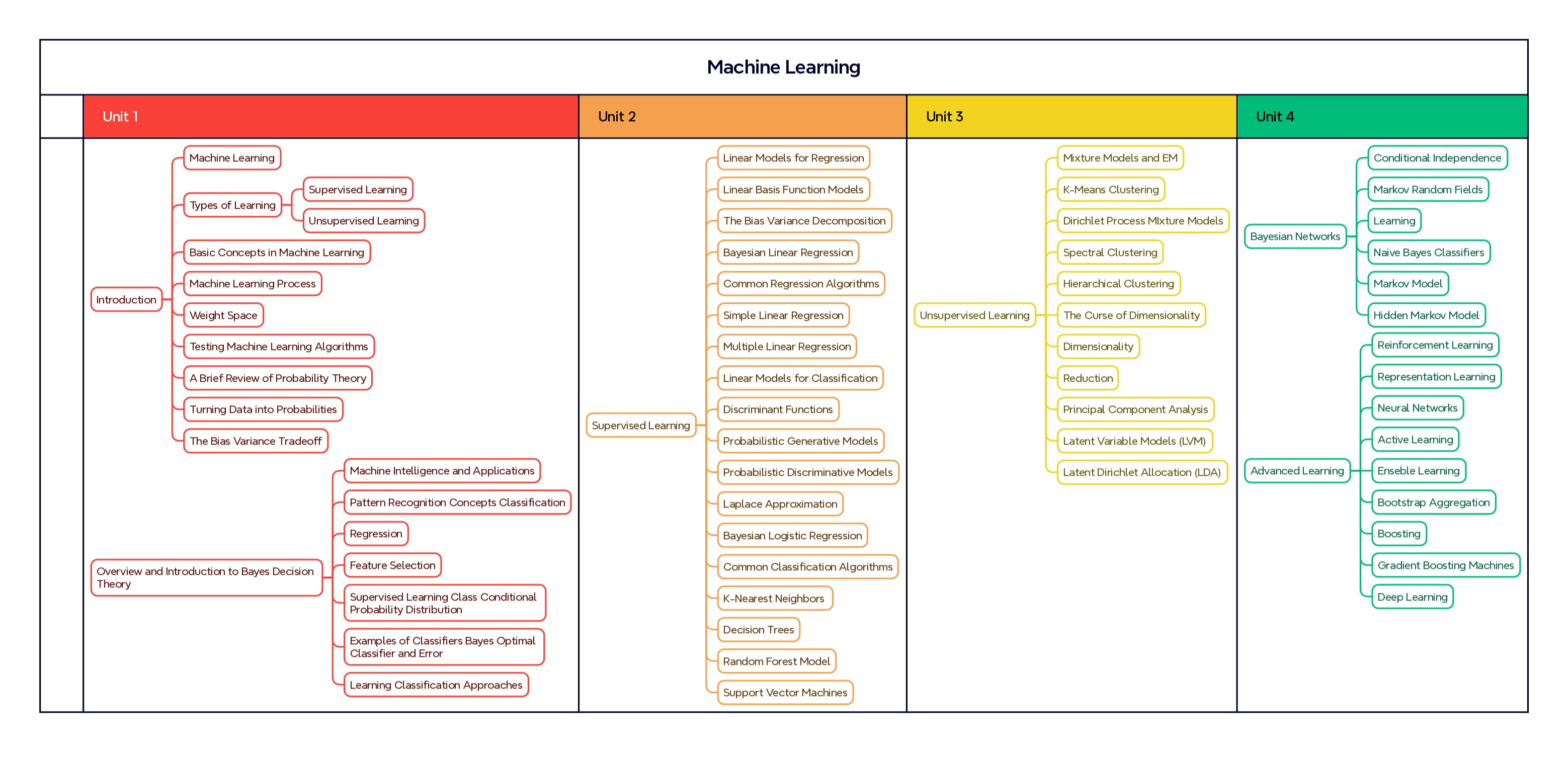
- Unit I
- Introduction
- Machine Learning
- Types of Learning
- Basic Concepts in Machine Learning
- Machine Learning Process
- Weight Space
- Testing Machine Learning Algorithms
- A Brief Review of Probability Theory
- Turning Data into Probabilities
- The Bias Variance Tradeoff
- Overview and Introduction to Bayes Decision Theory
- Machine Intelligence and Applications
- Pattern Recognition Concepts Classification
- Regression
- Feature Selection
- Supervised Learning Class Conditional Probability Distribution
- Examples of Classifiers Bayes Optimal Classifier and Error
- Learning Classification Approaches
- Unit II
- Supervised Learning
- Linear Models for Regression
- Linear Basis Function Models
- The Bias Variance Decomposition
- Bayesian Linear Regression
- Common Regression Algorithms
- Simple Linear Regression
- Multiple Linear Regression
- Linear Models for Classification
- Discriminant Functions
- Probabilistic Generative Models
- Probabilistic Discriminative Models
- Laplace Approximation
- Bayesian Logistic Regression
- Common Classification Algorithms
- K-Nearest Neighbors
- Decision Trees
- Random Forest Model
- Support Vector Machines
- Unit III
- Unsupervised Learning
- Mixture Models and EM
- K-Means Clustering
- Dirichlet Process Mixture Models
- Spectral Clustering
- Hierarchical Clustering
- The Curse of Dimensionality
- Dimensionality Reduction
- Principal Component Analysis
- Latent Variable Models (LVM)
- Latent Dirichlet Allocation (LDA)
- Unit IV
- Bayesian Networks
- Conditional Independence
- Markov Random Fields
- Learning
- Naive Bayes Classifiers
- Markov Model
- Hidden Markov Model
- Advanced Learning
- Reinforcement Learning
- Representation Learning
- Neural Networks
- Active Learning
- Ensemble Learning
- Bootstrap Aggregation
- Boosting
- Gradient Boosting Machines
- Deep Learning
